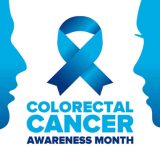

According to a 2009 U.S. Health and Human Services report, more than one in every three American adults has metabolic syndrome. Frequently associated with insulin resistance, metabolic syndrome is a prevalent precursor to some of the most common and troublesome health problems – and it is reversible if detected early enough. A combination of lab tests and measurable parameters determine if you have metabolic syndrome; but there are several additional, frequently overlooked indicators that give reason to seek a physician’s evaluation of this common condition.
What Is Metabolic Syndrome?
A cluster of less-than-ideal health measurements, metabolic syndrome is a diagnosis implying a significant risk for developing Type 2 diabetes and heart disease. In addition, metabolic syndrome increases a person’s susceptibility to having a stroke or heart attack and raises the likelihood of fatty liver disease, kidney damage, obstructive sleep apnea, polycystic ovaries and dementia. In an effort to remain healthy, the goal is to identify whether or not you have metabolic syndrome – and, if so, take the necessary steps to reverse it.
Insulin resistance is a key component of metabolic syndrome. Besides setting the stage for Type 2 diabetes, insulin resistance is often correlated with obesity and cardiovascular problems. The following typically occurs with insulin resistance:
- Normally, sugar in the bloodstream signals the pancreas to secrete the hormone insulin.
- Insulin attaches to cells, removing sugar from the bloodstream so that it can be used for energy.
- When cells become insulin resistant, they have a diminished ability to respond to insulin’s action.
- To compensate for the insulin resistance, the pancreas secretes more insulin.
- Over time, insulin loses its effectiveness causing high blood sugar levels to remain in the bloodstream.
In order to qualify as having metabolic syndrome, three of the five measurable risks must apply:
- High Blood Pressure – Having blood pressure of 135/85 or higher, or being on blood pressure medication.
- Large Waist – Having a waist of 35 inches or larger for women; 40 inches or larger for men.
- High Triglycerides – Having triglycerides of 150 mg/dL or more, or being on cholesterol medication.
- Low Good Cholesterol (HDL) – Having HDL less than 40 mg/dL for men; less than 50 mg/dL for women, or being on cholesterol medication.
- High Blood Sugar – Having a fasting glucose level of 100 mg/dL or higher.
The requirements for identifying metabolic syndrome are clearly mapped out above; however, not everyone knows their current blood pressure, waist measurement, cholesterol breakdown and blood sugar levels.
3 Metabolic Syndrome Warnings
Especially for those without easy access to health care, the following three signs could indicate insulin resistance and metabolic syndrome – and therefore warrant close attention:
- Craving Carbohydrates – If it feels like your appetite for sweets and carbohydrates (like chocolate bars, bread, bagels, pastries, pasta, potatoes and rice) is constant and growing; your cravings could be due to high blood sugar levels. When sugar is not properly ushered into cells, the body mistakenly thinks it is starving, and sends out a signal to eat more glucose-rich foods. Unfortunately, this feeds the cycle of more carbohydrate cravings – which leads to weight gain, insulin resistance and metabolic syndrome.
- Peeing All the Time – Frequent bathroom visits that make it feel like you are urinating all day long can also be due to high blood sugar levels. Urination becomes more frequent when there is too much glucose in the blood. This is because excessive blood sugar levels and insulin resistant cells require the kidneys to filter and reabsorb more glucose than usual. This overwhelms the kidneys, so they attempt to dilute the glucose by drawing more water out of the blood. Drawing water from the blood keeps the bladder full and results in frequent urination.
- Feeling Really Tired – Many things can cause fatigue, including a bad night’s sleep. However, when accompanied by carbohydrate cravings and excessive urination, feeling perpetually exhausted could be a consequence of high blood sugar levels. Normally, insulin transports glucose from the blood into our cells to produce energy. However, insulin resistant cells don’t receive the glucose, starving them (and you) of energy.
Individually, carbohydrate cravings, excessive urination and fatigue can have a multitude of physiological causes. However, when these three signs present together, high glucose levels in the blood is a likely culprit. Since persistently elevated glucose levels prime the body for insulin resistance, metabolic syndrome is a realistic concern.
The best way to detect metabolic syndrome is by a physician’s evaluation of blood pressure, waist circumference, cholesterol profile and blood glucose levels. Those who don’t see their doctor for an annual checkup could easily miss this diagnosis. As such, being aware of the three predisposing insulin resistance signs just described should prompt a swift assessment of metabolic measurements – so the 34 percent of Americans with metabolic syndrome can immediately get to work on its reversal.




